Home> Company News> Ice making principle and technology development
- AddressNo.4087 SHAHEXI ROAD, TIAOQIAO DISTRICT,JINAN,CHINA
- Factory AddressNo.4087 SHAHEXI ROAD, TIAOQIAO DISTRICT,JINAN,CHINA
- Worktime9:00-18:00
- Phone(Working Time)0531-85064681
- Phone(Nonworking Time)86-18660125156
- Fax0531-85064682
Ice making principle and technology development
2018-10-19 11:44:41By referring to the relevant literature and patents at home and abroad, the ice-making devices are classified, and the ice-making principles of different ice-making machines are described, which can provide learning materials for professional and technical personnel, and also provide reference for the design of ice-making machines.
The ice making technology includes 3 aspects: ice making mode, ice making device and ice shape. Based on the ice making principle of ice making machine, the ice making machine is divided into steam compression type, direct contact type and vacuum type.
Vapor compression ice maker uses vapor compression refrigeration system (Freon refrigerant, ammonia refrigerant, mixed refrigerant) to directly or indirectly freeze the water for ice making, according to the different ice-forming devices, to produce ice of different shapes.
Slice ice machine is a fast ice making device, composed of refrigeration system, ice making system and electrical system. Ice maker is a cylindrical heat exchanger, water spraying or infiltration of its surface, the formation of ice layer, scraped by the blade, the thickness of ice sheet is generally about 2 mm. According to the position of water spraying to the surface of the cylinder, it can be divided into two types: scraper internal rotation (see Figure 1) and scraper external rotation.
Another large chip ice machine, called borneol sliding ice maker, is mainly used for ice storage air-conditioning systems. The water in the storage tank is sprayed from top to bottom on the surface of the plate evaporator of the ice maker through a water pump to freeze it into ice layer. When the ice thickness reaches 3-9 mm, part of the high-temperature refrigerant gas from the compressor outlet is passed through the four-way valve of the ice maker into the evaporator. After 20-30 seconds, the ice contacting the plate surface of the evaporator melts and slides down to the storage tank by its own gravity. Modular design is adopted. Each evaporation plate module (bank) is composed of multi-plate heat exchangers. The ice-making capacity is 137.5 kW (39.1 Rt) under standard operating conditions, and special compression and condensation unit is used.
Ice scraper revolving type: 1. insulating container; 2. gas-liquid separator; 3. sprinkler; 4. ice layer; 5. ice cylinder; 6. ice knife holder; 7. ice scraper 2.
External rotation type of scraper: 1. barrel frame; 2. ice cylinder; 3. ice scraper; 4. gas-liquid separator; 5. cooling medium tube; 6. ice scraper; 7. drop notch; 8. water pump; 9. water collecting tank; 10. power source sheet ice machine condenser generally supporting 4 to 8 sets of evaporation plate module.
Particle ice maker Particle ice maker According to different shapes of ice chamber, it can make round and square
Granular ice of equal shape. Round ice is generally 20-22 mm in diameter and 25-30 mm in height; square ice is generally 32 mm *32 mm *28 mm, 25 mm *25 mm *23 mm, 28 mm *28 mm *23 mm.
According to the de icing mode, the granular ice maker is divided into 2 categories: the hot gas deicing type and the electric heating deicing type. The ice tray is an aluminum plate with a pits pits upside down and is located above the inner liner of the ice maker. Evaporators are welded above for refrigeration. The bottom of the ice tray is a sprinkler, which can be filtered through tap water or pressurized by the pump. The water spray freezes rapidly on the crater of the ice-making tray. When the ice reaches a certain size, the sensor moves and the high-temperature refrigerant passes through the evaporator directly, causing the ice to melt and fall down. Hot gas deicing type (a): 1. door; 2. ice tray; 3. insulation layer; 4. evaporator; 5. refrigeration system and pipeline; 6. water pipe and nozzle; 7. inner tank; 8. condenser; 9. water pump; 10. two stage filter; 11. compressor; 12. control system
The utility model relates to a hot ice deicer, which is composed of 2 parts, a main body and an auxiliary body. The main body includes ice making unit, evaporation coil, water supply system and drainage system. The water supply container and the drainage collection container are installed in the auxiliary body. When making ice, the water supply pump works, and the water pump in the water supply container is sent to the ice tank. On the way, it passes through the water purifier and sterilization lamp. When water is filled with an ice trough, it overflows to the adjacent ice trough, so that all the ice troughs are filled one after another through the intersection. The water valve then cuts off the water supply pump, while the refrigeration system opens, refrigerant flows into the evaporation coil, the base sways up and down, creating a bubble-free transparent ice. The plates and freezing fingers are cooled below freezing point, causing the water around the fingers to freeze gradually. After the ice making, the control unit sends out the corresponding signal, and the heat refrigerant at the compressor outlet is directly introduced into the evaporation coil. At the same time, the motor drives the base to rotate 90 degrees downward around the axis, so that the remaining unfrozen water in the ice tank flows into the drain pipe and eventually flows to the drain collector.
The ice-making water storage cabinet is composed of a circulating cabinet and a precipitation cabinet. The two cabinets are separated by baffles. The ice-making water is stored in the circulating cabinet. The water in the precipitation cabinet can enter the circulating cabinet through the small holes in the baffle. During the ice making process, the unfrozen water enters the circulation cabinet directly through the opening. At the beginning of the ice making process, the refrigerant circulates in the evaporation coil and the ice chamber is cooled. The water is pressurized by the pump into the water pan and sprayed into each ice chamber through a spray hole. The ice sheet is frozen on the wall of the chamber. Unfrozen water dripped through the backwater holes on the water tray to the guide plate and flows downwards into the circulation cabinet. During deicing, the hot refrigerant gas is introduced into the evaporation tube to heat the ice chamber, and the ice falls off the ice chamber to the inclined surface of the upper end of the water plate, slides downward, pushes the movable door on the side wall, and enters the ice storage chamber. When the ice is discharged, the movable door returns to the initial position by gravity and recloses the ice making space. At the same time, the supplementary water enters the sedimentation tank through the supplementary pipe, and the water level of the sedimentation tank is restored to the original position until the next ice making process begins.
Electrically heated deicing (Fig. 8): The refrigeration system starts to work, so that the temperature of the insulation chamber is below 0 C; at the same time, the inlet valve is opened.
Electric heating deicing type: the refrigeration system starts to work, so that the temperature of the insulation chamber is below 0 C; at the same time, the inlet valve is opened, and the water flow through the inlet pipe of the ice maker into the ice forming chamber. When the water level reaches the water level, the solenoid valve closes and enters the static ice making process. When the ice block is formed (the water in the chamber is completely frozen), the electric heating element works to separate the ice block from the chamber wall, rotate the shaft rod and drive the scraper blade to rotate 360 degrees, scrape the ice block from the chamber into the ice storage chamber, rotate the shaft rod and reset the scraper blade. During deicing, the ice sheet moves in a reciprocating straight line or swings to check whether the ice in the ice storage chamber is full. If the reciprocating motion of the ice sheet is blocked, the ice is confirmed to be full, and the ice making control part stops making ice; if the reciprocating motion of the ice sheet is not blocked, the next ice making cycle is entered. The ice maker can produce round cap and square shaped granular ice. Because of the different sizes of machines, the ability of making ice is different.
Electric heating deicing type: 1. water inlet seat; 2. insulation chamber; 3. insulation layer; 4. evaporator; 5. door; 6. door shaft; 7. ice maker; 8. control solenoid valve; 9. water inlet pipe; 10. ice plate
The shell-and-tube ice maker has several vertical ice-making pipes, which are made of stainless steel pipes with a diameter of about 100 mm. Water is refrigerant inside the tube, and water flows up and down outside the tube. When the liquid is refrigerating in the pipe, the water outside the tube is frozen to ice and attached to the tube wall. After the ice is frozen, the tube is ventilated with hot air for deicing, so that the shell ice automatically falls from the tube. When the shell ice falls, it is smashed by the crushing knife below. After the ice breaks away from the ice-making tube, the ice is stopped deicing, and the liquid supply and water supply are restored to make ice again. The thickness of shell ice is generally 6~12 mm [18]. Direct contact heat transfer refers to the direct contact of two media. Although the direct contact heat exchanger was put forward earlier, the development of its characteristic research has been lagging behind the surface heat exchanger. Compared with surface heat exchanger, direct contact heat exchanger has the advantages of less corrosion, no fouling, high heat transfer efficiency, small heat transfer temperature difference, small pressure drop and low investment. The computer simulation results of R114 direct contact ice storage system show that the energy consumption per unit refrigeration capacity is 30% less than that of shell tube ice maker, and the ice making time is 13% shorter than that of shell tube ice maker under the same refrigeration capacity. Therefore, direct contact cold storage technology has wide application prospects. Direct contact ice maker is mainly used for ice storage, and its operation is based on the heat exchange of two different fluids. One of the two fluids, which is not mixed with water, has a specific water weight and is cooled below the freezing point temperature of the water through the refrigeration unit. Then the fluid passes through an ejector and pumps water from the cold storage tank circuit at high pressure. Applying this characteristic of the ejector system produces enough disturbance and cooling effect to turn ordinary water into ice crystals. When the ice-water mixture is sent to the tank, the lighter ice crystals will float above the tank, while the heavier fluid will be at the bottom of the tank to facilitate recycling. Domestic research is mainly focused on the direct contact ice making system of HCFC123/ water.
Vacuum ice crystals are widely used in aquaculture, food processing, hotels, restaurants, medical and ice storage air conditioning industries. Ice crystal can be directly transported by pump, and the contact area with the fresh-keeping object can reach 100%. It has no harmful effect on the fresh-keeping object. It has good effect and is very convenient to use. The vacuum ice maker sprays water atomization into the vacuum insulation chamber, and the water vapor formed on the surface of the water droplet is continuously pumped out. The water vapor absorbs the latent heat of evaporation from the water droplet, so that the temperature of the water droplet droplets droplets drops drops drops droplets droplets droplets droplets drop steadily until ice crystals form. The IPF of ice slurry can be realized by changing the vacuum degree of vacuum chamber and the number of nozzles. The device for making ice slurry by vacuum includes vacuum spray chamber, w ater supply system and vacuum exhaust system. The average diameter of the atomizing nozzle is 50 micron, the spray angle is 60 degrees, and the spray flow rate is 2-10 L/h at the pressure of 810 kPa. The vacuum chamber is 1.33 m high, so that the water droplet stays in the chamber for more than 0.002 s. The water used for ice making is ethylene glycol aqueous solution containing 7% ethylene. With the development of the technology, the ice machine presents the following trends: 1) Increase the rate of ice formation and shorten the time of ice formation. 2) automate the whole process from ice making to deicing, improve operation efficiency and save human resources. 3) increase the alarm and protection device to ensure the ice machine running stably and reliably. For example, the water level in the tank, the condensation temperature, the lack of refrigerant, the operation of the pump monitoring. 4) enhance the efficiency of refrigeration by means of enhanced heat transfer. 5) Pay attention to energy saving, such as pre-cooling water for ice making, recycling unfrozen water for ice making, deicing with hot gas, etc. 6) Adopting new materials to lighten the weight of the ice maker and reduce the volume of the ice maker, so that the ice maker can move conveniently without occupying space.
Concluding remarks Artificial ice is used more and more widely, and various kinds of high-efficiency, energy-saving and automatic ice making devices are constantly being developed. However, there are few papers on the principles of various ice making machines systematically. The 3 types of ice making are systematically discussed, providing design reference for professionals.
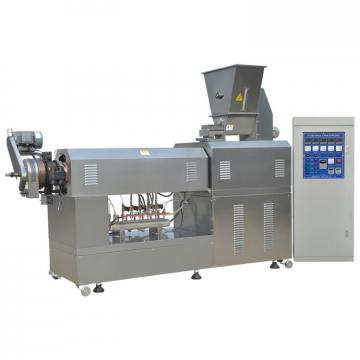 Factory Fruit and Vegetable Processing Machines/Quick Frozen Line/Food Processing Production Line for Daylily Production Line with High Output
Factory Fruit and Vegetable Processing Machines/Quick Frozen Line/Food Processing Production Line for Daylily Production Line with High Output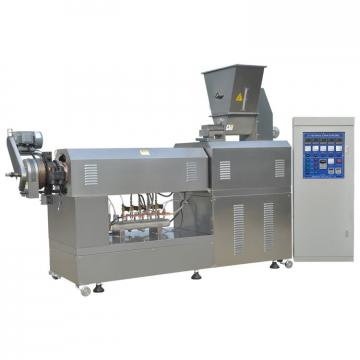 Factory Direct Sales PS Styrofoam Food Container Production Line
Factory Direct Sales PS Styrofoam Food Container Production Line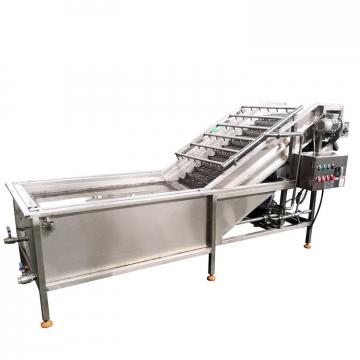 Complete Pure / Mineral Drinking Bottled Water Production Line Factory in Beverage / Food Area
Complete Pure / Mineral Drinking Bottled Water Production Line Factory in Beverage / Food Area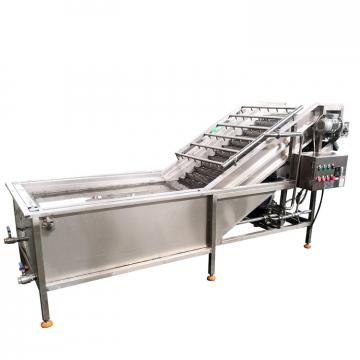 Cheetos Fried Food Production Factory Extruder Processing Line
Cheetos Fried Food Production Factory Extruder Processing Line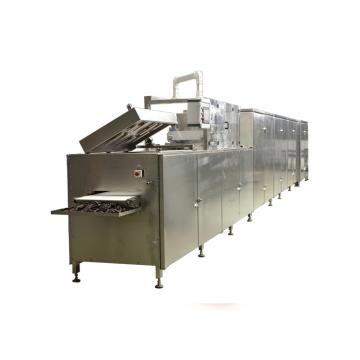 Automatic Mini Food Factory Macaroni Processing Line Pasta Production Line
Automatic Mini Food Factory Macaroni Processing Line Pasta Production Line
